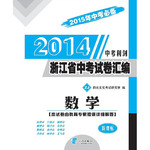题目内容
B. which
C. whose
D. that

 中考利剑中考试卷汇编系列答案
中考利剑中考试卷汇编系列答案 教育世家状元卷系列答案
教育世家状元卷系列答案 黄冈课堂作业本系列答案
黄冈课堂作业本系列答案阅读下面短文,掌握其大意,然后从11~25各题所给的A、B、C和D项中,选出最佳选项,并在答题卡上将该项涂黑。
eBooks still some way away from students
Twelve-year-old Tang Yin is one of the earliest students to test a digital textbook in China. The boy said he was a little 11 when he received the monochromatic(单色的) flat device in April, 2010, because he thought it should be a “ 12 cool” laptop. But Tan still cherishes(珍爱) his new equipment like “protecting my 13 ,” said the fifth grader. After all, not every student has the opportunity to 14 the eBook, which is worth $294 (¥2,000 yuan), he said.
The 50 eBooks, 15 by Taiwan eBook manufacturer Chuanqi Photoelectric Technology in Yangzhou, Jiangsu province, enables one class at Yangzhou Sanyuanqiao Elementary School to be the 16 group of students in the Chinese mainland to replace their regular textbooks with electronic ones. Out of 1000 students, Tang’s class was the lucky 17 .
“Our school could not 18 the project without the company’s donation,” said Yuan Shishan, vice-headmaster of the primary school. 19 the digital book is considered environmentally friendly, because it replaces paper books and saves money in the long run, the price is much higher than most Chinese 20 can afford. Also, some technical defects, the 21 of taking notes and monochromatic display, make the eBook fail to meet the expectations of students and teachers.
“There’s still a/an 22 way to go before the eBook really plays an important role in education,” said the headmaster.
According to Yuan, the annual average income of a 23 family in Yangzhou is about 20,000 to 30,000 yuan, and neither the parents nor the school can afford the 2,000 yuan 24 book.
The school doesn’t allow the students to take their eBooks to their homes. The devices are 25 after class, and are locked in the headmaster’s office.
| 【小题1】 |
|
| 【小题2】 |
|
| 【小题3】 |
|
| 【小题4】 |
|
| 【小题5】 |
|
| 【小题6】 |
|
| 【小题7】 |
|
| 【小题8】 |
|
| 【小题9】 |
|
| 【小题10】 |
|
| 【小题11】 |
|
| 【小题12】 |
|
| 【小题13】 |
|
| 【小题14】 |
|
| 【小题15】 |
|